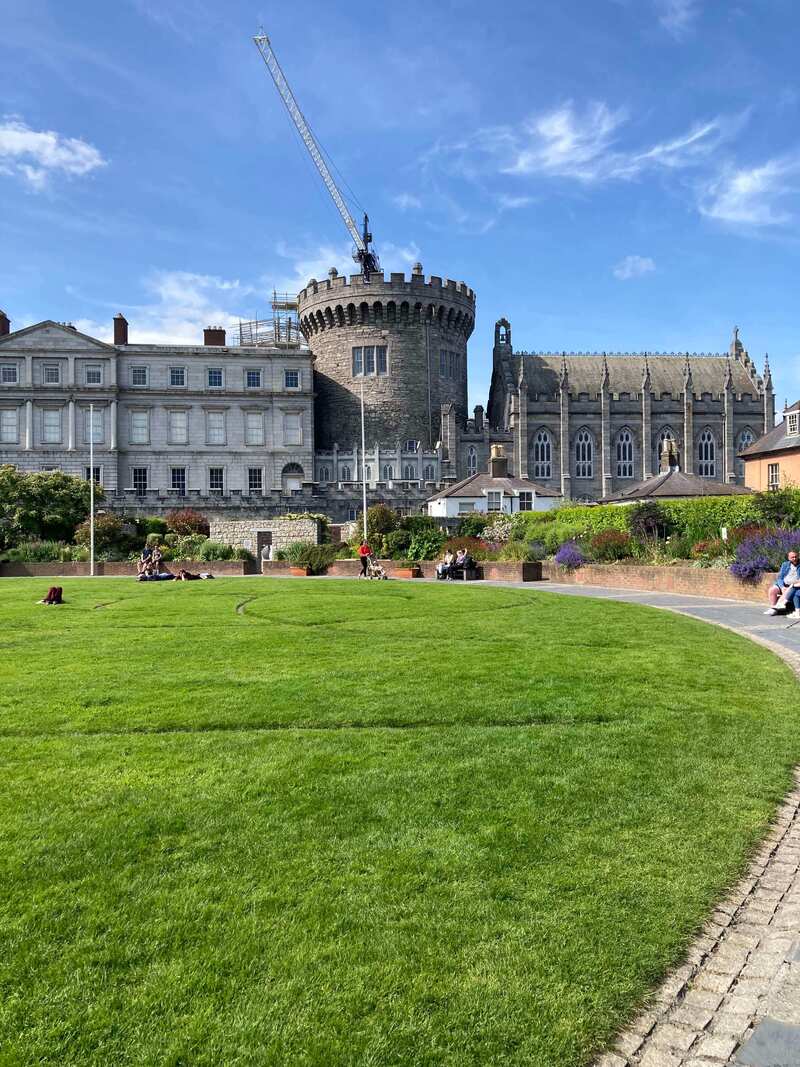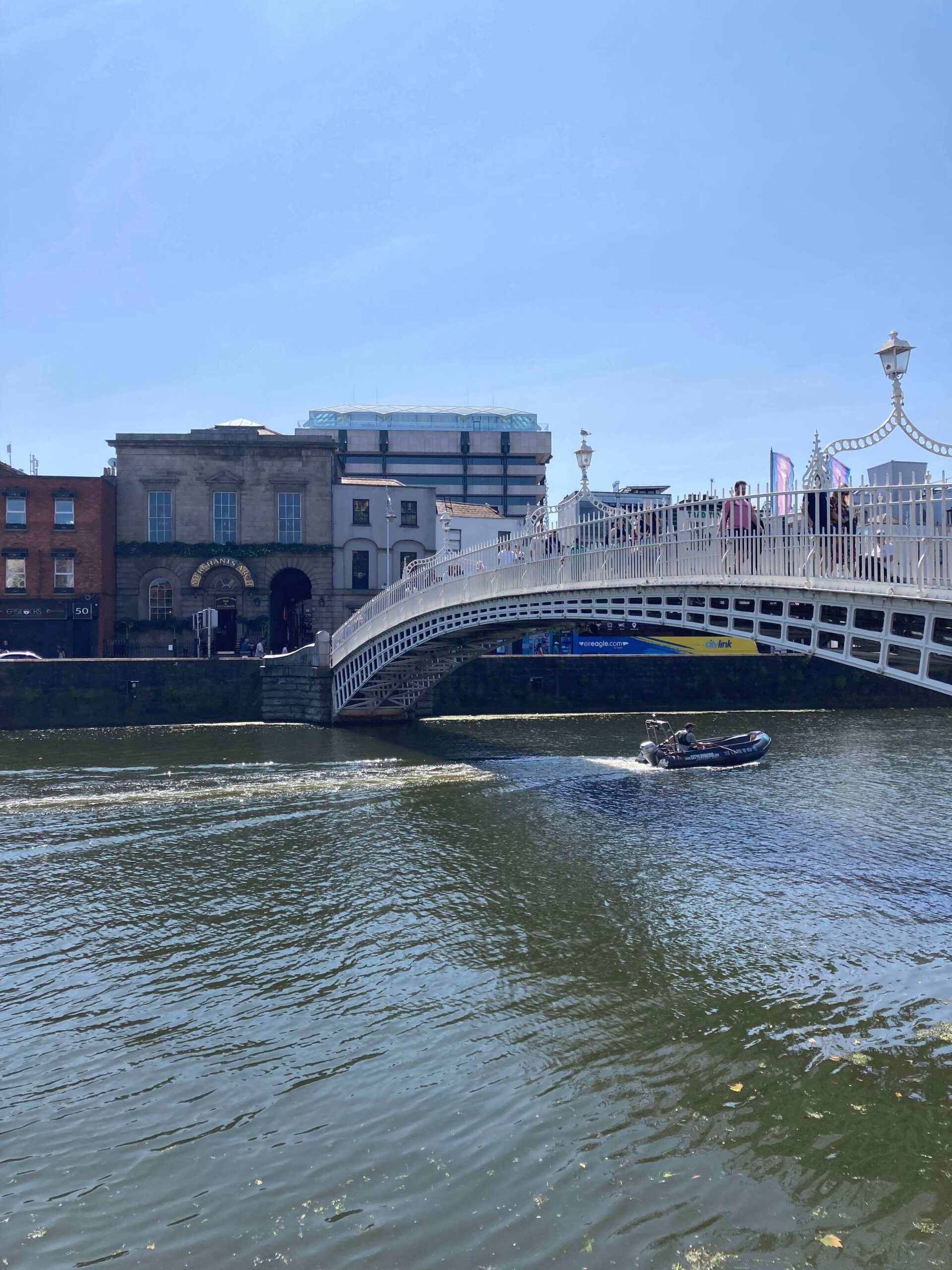Dublin is a city steeped in history and culture. Walking through its streets is like journeying through time, with every corner revealing stories from its past. From medieval castles to iconic bridges, Dublin’s landmarks offer a fascinating glimpse into the city’s evolution. Therefore, in this post, we’ll delve into the history behind Dublin’s famous landmarks.
Dublin Castle
Dublin Castle stands as a testament to the city’s long and storied history. It was originally built in the early 13th century on the site of a Viking settlement. Until now, the castle has served various roles throughout the centuries, from a defensive fortification to a royal residence and administrative center. The Record Tower, dating back to 1228, is the oldest surviving part of the original structure. Today, Dublin Castle is a major government complex and a key tourist attraction. In this role, it’s hosting state functions and offering guided tours that explore its past.

Trinity College and the Book of Kells
Founded in 1592 by Queen Elizabeth I, Trinity College is Ireland’s oldest university. Its beautiful campus is home to the Old Library, which houses the Book of Kells: A stunningly illustrated manuscript of the four Gospels dating back to the 9th century. The Book of Kells, with its intricate artwork and religious significance, remains one of the most treasured artifacts of the medieval period. Unquestionably, the college itself is a historical gem, with its classical architecture providing a glimpse into Ireland’s educational heritage.

The Ha’penny Bridge
Spanning the River Liffey, the Ha’penny Bridge is one of Dublin’s most iconic structures. Officially known as the Liffey Bridge, it was built in 1816. It got its nickname from the half-penny toll that was originally charged to cross it. This charming cast-iron pedestrian bridge symbolizes Dublin’s blend of historical charm and modern vibrancy. It was the first pedestrian bridge over the Liffey and remains a beloved landmark, offering picturesque views of the river and the city’s quays.
St. Patrick’s Cathedral
St. Patrick’s Cathedral, the largest cathedral in Dublin, has been a site of Christian worship for over 800 years. Built in honor of Ireland’s patron saint around 1191, it has witnessed many significant events in Irish history. Moreover, the cathedral’s impressive Gothic architecture, combined with its historical artifacts and memorials, makes it a must-visit landmark. Jonathan Swift, author of “Gulliver’s Travels” and former dean of the cathedral, is buried here. This adds literary significance to its already rich historical tapestry.
The General Post Office (GPO)
The GPO, located on O’Connell Street, is not only an architectural beauty but also a symbol of Irish independence. Completed in 1818, it became the headquarters for the leaders of the 1916 Easter Rising, when members of the Irish Volunteers Force and the Irish Citizen Army stormed the building. A pivotal event in Ireland’s struggle for independence from British rule. The building’s classical facade, with its imposing columns, bears scars from the uprising, serves as a poignant reminder of the nation’s fight for freedom. Today, the GPO is a functioning post office and a place of historical reflection. As such, it features an interactive exhibition on the 1916 Rising.

Kilmainham Gaol
Kilmainham Gaol, operational from 1796 to 1924, is a former prison that played a significant role in Ireland’s history. Many Irish revolutionaries were imprisoned and some even executed here. Including the leaders of the 1916 Easter Rising. The gaol’s stark and eerie interior offers a sobering insight into the harsh conditions endured by prisoners. Now a museum, Kilmainham Gaol provides guided tours that delve into Ireland’s fight for independence, making it a site of profound historical importance. Further, its halls frequently serve as a setting for films and TV series – from Paddington to the Tudors.
Phoenix Park
Phoenix Park is one of the largest enclosed public parks in any capital city in Europe, spanning over 1,700 acres. Established in 1662 as a royal deer park, it was opened to the public in 1747. The park is now home to the official residence of the President of Ireland, Áras an Uachtaráin, and Dublin Zoo, one of the oldest zoos in the world. With its vast green spaces, historic monuments, and herds of fallow deer, Phoenix Park is a haven of natural beauty and historical significance.
Dublin’s landmarks are not just architectural wonders. They are chapters in the story of a city that has grown, evolved, and thrived over centuries. Each site offers a unique window into Dublin’s past. From its medieval origins and educational advancements to its fight for independence and cultural achievements. Therefore, exploring the History Behind Dublin’s Famous landmarks allows visitors to make every visit to this city a journey through time.


0 Comments